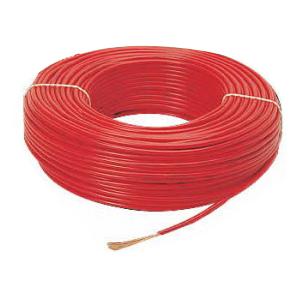
Looking at a bunch of brightly colored electrical cables and wondering what they mean? All of you have wondered what the different colors of wires mean right? Well you’re in luck as this article is written for people like you then. If you happen to live in the USA then you can expect the electrical wires behind your walls to follow certain color codes. The different colors will help you to identify each wire’s function in the circuit. Understanding and knowing the electrical color code that dictates which wire does what is imperative not only in the correct configuration of an electrical system but it’s also crucial to your safety.
Make sure that all wires regardless of their color or function carry an electrical current at some point so treat all wires with equal caution.
1.
Black Electrical Wires
.jpg)
The black colored wire is designed to transfer power to the switches and outlets in all types of circuits. Black wires are also often used as switch legs in circuits,
which is the connection linking a switch to the electrical load.
Consider black wires to be live at all times
2. Red Electrical Wires
Red electrical wire means that the secondary live wires in a 220-volt circuit, used in some types of switch legs and in the interconnection between smoke detectors that are hard
wired into the power system. You can’t connect a red wire to another red wire or connect a red wire to a black wire.
3. Blue and Yellow Wires
.jpg)
Blue and yellow wires are used as the live wires pulled through a conduit e.g. you might see yellow wires as switch legs to ceiling fans, structural lights and outlets paired with light switches. Then blue wires are most often used as travelers for three- or four-way stitches.
4. White and Grey
White and grey colors indicate a neutral wire. White is the color that is most often used for this function. A neutral wire connects to the neutral bus bar within an electric panel.
You can only connect the white and grey wires to other white and grey wires. Although neutral, they can still carry current, particularly the unbalanced load-the electricity not being used and being returned to the electrical service.
5. Green Electrical Wires
.jpg)
The purpose of the green wires is to ground an electrical circuit. They connect to the grounding terminal in an outlet box and run to the ground bus bar in an electrical panel. In this way, the green wires act as a failsafe, giving electricity a place to escape into the ground if a live wire within the circuit touches metal or something else conductive. Green wires can also connect to other green wires. Remember, if there’s a fault somewhere in your circuit, green wires could be live, so treat them with caution.
With this color code guide, you will have a better idea of which wires serve what purpose. I hope this article was helpful.
____________________________________________________________________________________________
About Author:
(75x75).png)
Jeson Pitt works with the marketing department of D&F Liquidators and regularly writes to share his knowledge while enlightening people about electrical products and solving their electrical dilemmas. He's got the
industry insights that you can count on along with years of experience in the field. Jeson lives in Hayward, CA and loves to explore different cuisines that the food trucks in the Bay area have to offer.